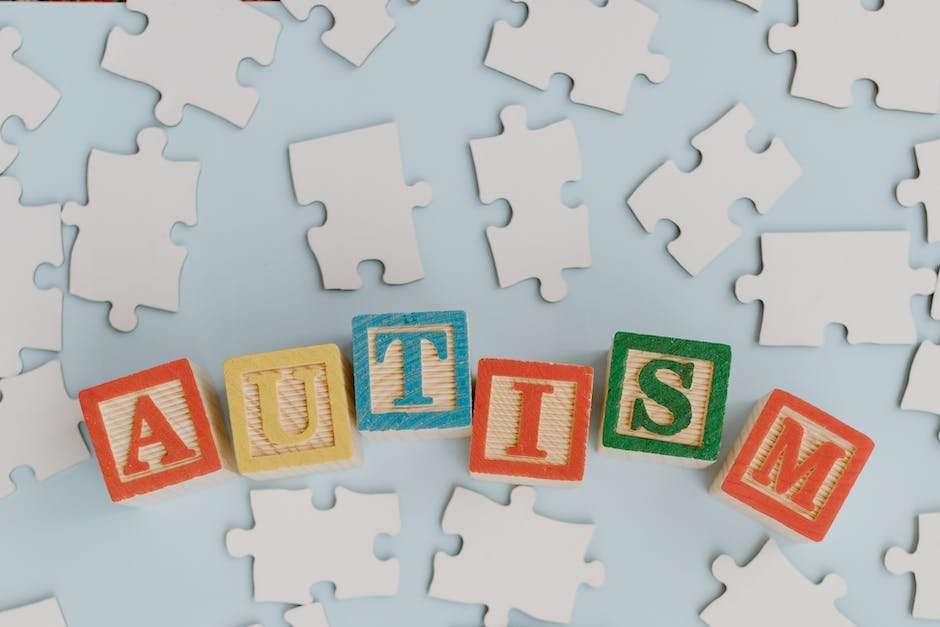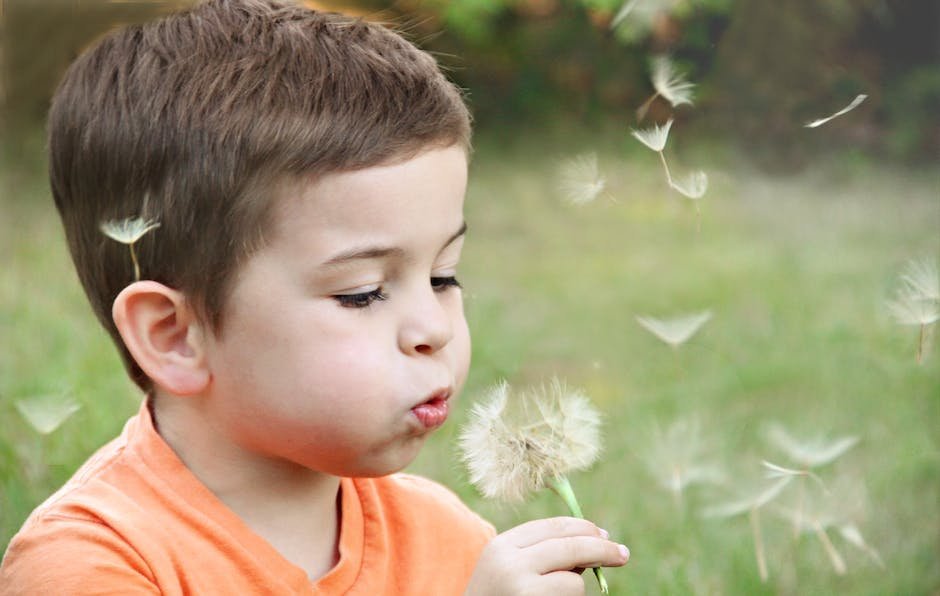
Many children with autism spectrum disorder (ASD) encounter persistent difficulties with sleep, which can significantly impact their overall health and development, as well as the well-being of their families. Sleep challenges, ranging from trouble falling asleep to frequent night wakings, are more common in individuals with autism due to their unique physiological and neurological makeup. This essay seeks to illuminate the nature of these sleep disturbances and introduce evidence-based behavioral interventions that can ameliorate them. By exploring the core principles behind these strategies, families will be empowered with knowledge to create a sleep-positive environment, establish consistent bedtime routines, and confidently address nighttime wakings—all tailored to meet the specific needs of a child with autism.
Understanding Sleep Challenges in Autism
Unlocking the Mystery Behind Sleep Struggles in Autistic Children
Hey there, fellow parents and caregivers! Anyone who’s been on this wild ride of parenting knows that bedtime isn’t always a dream. Especially for our little ones on the autism spectrum, the sandman can be a tad more elusive. Have you ever wondered why some autistic children find it so hard to drift off to dreamland? Let’s demystify this bedtime conundrum together.
To begin with, sensory sensitivities are a hallmark of autism. That scratchy tag on pajamas, the hum of the air conditioner, or even the subtle flicker of a nightlight can escalate from a mild distraction to a colossal barrier to sleep. These kiddos often perceive the world more intensely, turning what we’d shrug off into potential sleep-stealers.
Next up, let’s talk about the eternal internal clock – the circadian rhythm. For many autistic children, these rhythms are like a watch that can’t quite keep time properly. Irregular melatonin production can throw off the usual signs that tell their bodies it’s time to hit the hay, leading to a whole host of sleep issues from trouble falling asleep to waking up at odd hours.
Even their wonderful whirlwind of thoughts and interests can play a part. A laser-sharp focus on their passions can make ‘switching off’ a challenge. Just imagine being so enthralled with your latest dinosaur facts book that sleep seems like the less appealing option – it’s kind of like that.
Additionally, anxiety often creeps into the mix. Changes, even small ones like transitioning from a lively day to the still of the night, can spike anxiety levels in autistic children, making winding down more difficult.
And let’s not sidestep the potential biological culprits – gastrointestinal issues and food sensitivities, which are no strangers to many autistic children, can also contribute to their sleep struggles.
So there you have it, a little insight into why the land of Nod can be just out of reach for some of our precious little ones. While bedtime might not be the smooth sailing we all yearn for, understanding the why behind these struggles is the first step to navigating them. Here’s to more good nights for everyone – because when they sleep better, we all rest easier. Sweet dreams, everyone!

Principles of Behavioral Sleep Interventions
Embracing Slumber: Behavioral Sleep Interventions for Autistic Children
As parents, we all know that a good night’s sleep is like the holy grail of parenting – it’s precious, elusive, and makes all the difference in the world for our children’s health and happiness. But for families with autistic children, bedtime isn’t just a challenge; it’s a nightly quest. Understanding the core principles behind behavioral sleep interventions can turn that quest into a peaceful journey towards dreamland.
Let’s dive into approaches that can make a difference without rehashing what we already know about sensory sensitivities, circadian rhythms, and anxiety.
Consistency is KeyCreating and sticking to a consistent bedtime routine is a cornerstone of behavioral sleep interventions. This goes beyond the usual brushing of teeth and storytime. For autistic children, predictability in their evening schedule provides a sense of security, allowing them to ease into sleep with less resistance. This routine can include dimming the lights, turning off stimulating electronics, and engaging in calming activities.
Sleep Environment MattersOptimizing the sleep environment is crucial for encouraging slumber. A comfortable mattress, appropriate bedding, and a room that’s the right temperature can make a world of difference. Some children may benefit from weighted blankets, which can provide a sense of comfort and security, while others may need a completely dark and quiet space. Tailoring the sleep sanctuary to meet a child’s unique needs can provide the perfect backdrop for restful sleep.
Positive Reinforcement Goes a Long WayIntegrating positive reinforcement can encourage desirable bedtime behaviors. This means celebrating successes, no matter how small. A sticker chart or a simple verbal praise for staying in bed can boost a child’s motivation and make the whole process more enjoyable for everyone involved. Remember that positive reinforcement isn’t about bribing; it’s about acknowledging and encouraging the effort it takes to follow the new routine.
Training the Body’s Internal ClockGradual adjustments to sleep times can help train an autistic child’s body to adjust to a more traditional sleep-wake cycle. This method, known as sleep scheduling, involves a step-by-step approach to shifting bedtimes and wake-up times to better align with the family’s routine and the natural world outside. Patience is a virtue; each adjustment should be small to avoid overwhelming the child.
Mindfulness and Relaxation TechniquesIntroducing mindfulness and relaxation techniques can aid in easing the mind and body into sleep. This could involve deep breathing exercises, progressive muscle relaxation, or guided imagery. These practices can help reduce bedtime anxiety and make the transition to sleep smoother.
Remember, when approaching sleep-related challenges for autistic children, the core principle is to understand their unique needs and preferences. No single strategy is one-size-fits-all, and sometimes, it takes a combination of techniques, along with a lot of love and patience, to find the right formula.
As we wrap things up, embrace these sleep principles with a compassionate heart and an open mind. Here’s to more Zzz’s and less bedtime blues!

Photo by daen_2chinda on Unsplash
Creating a Sleep-Positive Environment
Creating a sleep-positive environment for a child with autism doesn’t have to be a challenging task. In fact, with a little extra love and a sprinkle of patience, parents can turn bedtime into a peaceful retreat for their little ones.
Understanding a child’s unique preferences and comfort needs is paramount. For starters, let’s talk about the importance of a predictable wind-down routine. Just like a cozy blanket, a regular bedtime ritual gives children a sense of security. Whether it’s a warm bath before bed or a quiet storytime, this routine signals to the brain that it’s time to wind down and prepare for sleep.
Next up is the bedroom environment. Keep the room clutter-free to reduce overstimulation. Soft, calming colors are typically more soothing than bold, bright shades. Consider blackout curtains to block out any light that might prevent your child from sinking into a deep slumber. On the same note, some children with autism find a weighted blanket comforting as it applies gentle, even pressure, much like a calming hug.
Of course, every child is different. Experiment with noise levels – some may prefer complete silence, while others might appreciate the soft hum of white noise or a familiar melody played at a low volume to help them drift off.
Let’s not forget the power of positive reinforcement. Celebrating small victories can make a big difference. A sticker chart or a special bedtime story after a successful night’s sleep could encourage your child to see bedtime as a positive experience, not a dreaded one.
Patience is indeed a virtue when helping a child with autism adjust to a sleep-friendly routine. It may take time for these new habits to become second nature, but trust that each small step is a giant leap towards a night of restful sleep. And remember, parents are never alone on this journey – there’s a whole community out here, sharing the night sky, eager to exchange experiences and uplift each other in creating the best possible environments for our special stars to shine brightly, even in their dreams. Sleep tight!

Establishing a Bedtime Routine
Creating a Harmonious Bedtime Ballet: Settling Night-time Nerves for Children with Autism
Oh, what a journey parenting can be—especially when nurturing a child with autism. With a day often packed full of highs and lows, the approach of nighttime can feel like a delicate ballet, where every step and every move counts to culminate in the peaceful slumber of our little ones. Crafting a restful nighttime haven for our sweet dreamers doesn’t just happen; it’s a thoughtful process full of love, adjustments, and sometimes a sprinkle of creativity.
Diving right in, let’s talk about the importance of a predictable wind-down routine. Just like the sky cues the stars to shine as dusk falls, a stable series of bedtime actions signals to our children that it’s time to transition from the day’s excitement to night’s peacefulness. Try imagining a ‘cooldown’ period, where activities progressively quiet the mind and body: a gentle bath, a favorite storybook, or a quiet conversation about the day. This kind of rhythm becomes a roadmap to dreamland.
Next, consider the spaces where we tuck our angels in. A clutter-free and calming bedroom is like a nest— it’s warm, safe, and free of distractions. Keeping the bedroom tidy and serene helps eliminate unnecessary stimuli that could keep an active brain buzzing when it should be unwinding.
For our sensory-sensitive sleepers, having blackout curtains can be a game-changer. They block out disruptive streetlights and early sunrays, which could disrupt an already sensitive sleep pattern. Weighted blankets might serve as a soothing hug, providing comfort and security throughout the night. Assessing what comfort means for our individual children is key—it can make all the difference in embracing restfulness.
Now, let’s play a little Goldilocks and find out what noise level is ‘just right’ for our kids. Some find solace in the quiet, while others may benefit from a white noise machine or soft music that can mask jarring nighttime sounds. Experimentation here is essential, as each child will have their unique preference.
Whenever progress is made, however small, let’s celebrate with heaps of positive reinforcement! Rewards, praise, and recognition for successful steps towards self-soothing and sleep can reinforce these practices and boost confidence—because every victory is a big deal.
Patience is perhaps the most precious virtue as we help our children with autism find their sleep groove. Some nights will feel like a step back, but it’s all part of the dance. Gentle encouragement and a boatload of understanding go a long way as we guide them towards more consistent sleepy-time success.
Lasty, remember the power of community. Sharing experiences, tips, and, yes, even those tough nights, can open doors to new strategies and support. There’s comfort in knowing we’re not alone on this starlit journey to better sleep for our children with autism.
Tucking in our children should feel like a love letter to their senses and souls, a peaceful passage that beckons them sweetly to the land of dreams. So, let’s craft that sanctuary, step by thoughtful step, until the night’s ballet ends with the soft symphony of our children’s restful slumber. Sweet dreams!

Dealing with Nighttime Wakings
Managing nighttime wakings in children with autism can be a significant challenge for parents. However, with the appropriate strategies and an empathetic approach, these nightly disruptions can be eased, leading to better sleep for the whole family.
Firstly, visual schedules can be a tremendous comfort to children with autism. A visual aid outlining the bedtime routine can help set expectations and provide a familiar structure. This could include images or symbols that represent bathing, putting on pajamas, bedtime reading, and lights off. The predictability can be soothing and make transitions smoother.
Another valuable approach involves restrictive sleep interventions, where parents gradually reduce the presence of an adult in the child’s room at bedtime, helping the child learn to settle independently. This might start with sitting by their bed and progressively moving further away over time until they can fall asleep with minimal assistance.
When nighttime wakings do occur, a non-stimulating environment should be maintained. Keep interactions calm and low-key, using a gentle voice and minimal lighting to avoid fully waking the child. It’s also essential to limit engaging activities during these times so that the child understands that nighttime is for sleeping, not for play or interactive time.
Consultation with a sleep specialist who has experience with autism spectrum disorders can provide personalized guidance. These professionals can offer tailored strategies based on the child’s specific needs and the family’s situation. In some cases, they might suggest a trial of melatonin or other interventions that should be pursued under professional guidance.
Additionally, engaging in regular daytime physical activity can promote better sleep. Encouraging children with autism to participate in energy-burning activities during the day can help them feel more tired and ready for rest at night. Of course, this should be balanced with ample downtime before bed to prevent overstimulation.
Last Supper Lastly, maintaining a healthful diet may also contribute to improving sleep. Avoiding caffeine and sugar close to bedtime is advisable, and for some children, certain food additives might disturb their sleep. Keeping a food diary can help to identify any potential dietary triggers that affect sleep patterns.
Parents navigating nighttime wakings with their autistic children are not alone. Online forums, local support groups, and resources from autism advocacy organizations can be invaluable. Engaging with a support network allows for the sharing of experiences and strategies that can make a difference. By combining these insights with professional advice, parents can craft a more peaceful night for everyone.
Remember, this journey with your child is unique, and their needs may evolve over time. Staying flexible, observant, and compassionate while implementing these techniques can make all the difference in achieving restful nights.

Monitoring and Adjusting Strategies
As families navigate the unique challenges of ensuring restful sleep for a child with autism, it becomes clear that monitoring and adjusting sleep strategies is not a one-size-fits-all situation. It’s like journeying through a maze; just when you think you’ve got the right path, a turn can lead to new challenges. Adapting sleep practices to the evolving needs of a child takes diligence, observation, and a willingness to change course.
Now, knowing when it’s time to make changes starts with keeping a sleep diary. This simple but effective tool captures patterns and triggers that may affect sleep. It’s the detective’s notebook in the quest for better slumber. Track bedtimes, wake times, diet, activities, and any night-time awakenings. An abrupt change in these patterns could signal that current strategies need a tweak.
For example, an increase in night-time awakenings might mean that sensory adjustments in the bedroom, like the density of a weighted blanket or the amount of light filtering through curtains, need revisiting. It could also suggest that new anxieties are at play, or that a child’s body is becoming too accustomed to a certain routine, rendering it less effective.
When adjusting strategies, it’s often small changes that make the difference. Incremental shifts in bedtime, gentle transitions from one activity to another, or slowly introducing new comfort items keep the adjustment period from becoming overwhelming. Children with autism may require time to acclimate to these changes.
It’s also crucial to recognize the role of communication in this process. A visual aid, such as a chart or a series of pictures, can help explain these adjustments to children who may struggle with verbal explanation. This fosters a sense of involvement and understanding, making them more accepting of new routines.
Continuous dialogue with professionals is a further key. Regularly check in with a sleep specialist or pediatrician to discuss the sleep diary and any potential modifications to existing strategies. Their insights can guide more tailored adjustments that align with the latest research or therapeutic techniques.
Let’s not forget the importance of daytime routines, either. Ensuring that a child engages in adequate physical activity and follows a balanced diet can directly influence sleep quality. Sometimes, addressing wakefulness at night starts with looking at the hustle and bustle of daytimes.
And while managing these sleep strategies, it’s equally essential to have a support network to lean on. Engaging with others on similar paths can offer comfort and practical advice. Support groups and online forums dedicated to autism and sleep issues provide a wealth of shared knowledge and emotional support.
Finally, compassion and flexibility are the cornerstones. Each child is unique, and what works for one may not work for another. It’s sometimes a process of trial and error, and that’s okay. One step forward, two steps back is still movement in the right direction. It’s all about embracing the journey, learning, and growing along the way. After all, the goal is the well-being of the whole family, ensuring everyone wakes up refreshed and ready to embrace the new day together.

Mastering the art of a healthy sleep pattern is an ongoing process, particularly for children with ASD, who may require more tailored and sustained efforts. Yet, the journey toward better sleep isn’t one that families have to navigate alone. Armed with strategies for enhancing the sleep environment, establishing routines, handling nighttime disturbances, and the cyclic nature of evaluation and adaptation, parents and caregivers are equipped to promote healthier sleep habits. As each child with autism is unique, so too must be their sleep interventions; hence, the key is in personalizing approaches and remaining resilient and receptive to change. By diligently applying and fine-tuning these behavioral sleep tactics, families can pave the way for more restful nights and, consequently, brighter days.




